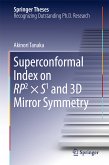This undergraduate textbook concentrates on how to make predictions about dimensions of the basic states of a quantum system from only two ingredients: the symmetry and the linear model of quantum mechanics. This method, known as representation theory or group theory, combines three core mathematical subjects, namely, linear algebra, analysis and abstract algebra and finds wide applications in crystallography, classification of manifolds with symmetry, atomic structure, and so on. The reader is first introduced to an important example of a quantum system with symmetry, the single electron in an hydrogen atom; and then the reader is given just enough mathematical tools to make predictions about the numbers of each kind of electronic orbital based solely on the physical spherical symmetry of the hydrogen atom. The final chapters address the related ideas of quantum spin, measurement and entanglement.
This user-friendly exposition, driven by numerous examples and exercises, requires a solid background in calculus and familiarity with either linear algebra or advanced quantum mechanics. This book will benefit students in mathematics, physics and chemistry, as well as a literate general readership.
A separate solutions manual is available to instructors.
Dieser Download kann aus rechtlichen Gründen nur mit Rechnungsadresse in A, B, BG, CY, CZ, D, DK, EW, E, FIN, F, GR, HR, H, IRL, I, LT, L, LR, M, NL, PL, P, R, S, SLO, SK ausgeliefert werden.









